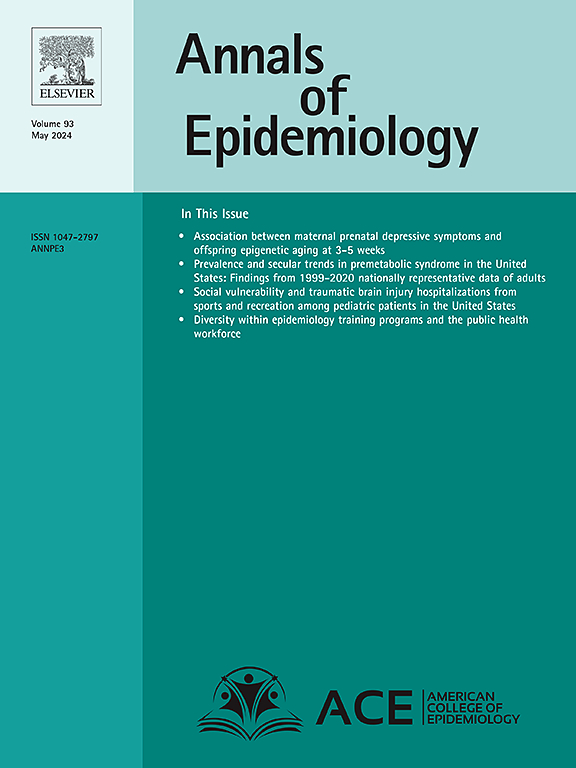Time-space characteristics of emergency medical service attendance and layperson naloxone administration during non-fatal opioid overdoses in Rhode Island: A retrospective, event-level analysis
IF 3
3区 医学
Q1 PUBLIC, ENVIRONMENTAL & OCCUPATIONAL HEALTH
引用次数: 0
Abstract
Purpose
As the opioid overdose crisis worsens in the United States (U.S.), emerging scholarship has uncovered time-and-place variations in substance use and overdose response efforts in community settings. Building on this work, we characterized spatio-temporal attributes of naloxone administration during non-fatal opioid overdoses attended by laypersons and emergency medical services (EMS) over a three-year period.
Methods
Leveraging EMS encounter data across Rhode Island between January 2020 and December 2022, we quantified hour-by-hour variations in EMS deployment locations for non-fatal opioid-involved overdoses among adults (aged 18 + years). We used multivariable Poisson regression with robust standard errors to identify spatio-temporal patterns in EMS-attended overdoses by location type and evidence of layperson naloxone administration during these events.
Results
Of the 5377 EMS non-fatal opioid overdose encounters, most occurred in residential housing (61.1 %) and outdoor public spaces (19.3 %). We identified substantial time-space variations in non-fatal overdoses, with EMS deployments to residential housing clustering in non-daylight hours (5:00PM-8:59AM) and to outdoor public spaces in daylight hours (9:00AM-8:59PM). Documented naloxone intervention by laypersons prior to EMS arrival was uncommon (10.6 %) but was most pronounced in overdoses occurring in residential housing and the early afternoon (1:00PM-4:59PM).
Conclusions
Despite the clustering of non-fatal opioid overdoses in housing environments, we identified substantial within-location variations in overdose-related EMS encounters over time and place.
罗得岛州非致死性阿片类药物过量期间紧急医疗服务出勤和非专业人员纳洛酮给药的时空特征:回顾性事件水平分析
目的:随着美国阿片类药物过量危机的恶化,新兴的学术研究揭示了社区环境中药物使用和过量反应工作的时空差异。在这项工作的基础上,我们描述了在非专业人员和紧急医疗服务(EMS)参加的非致命性阿片类药物过量期间纳洛酮给药的时空属性。方法利用罗德岛州2020年1月至2022年12月期间的EMS遭遇数据,我们量化了成人(18岁 +岁)非致命性阿片类药物过量的EMS部署地点的每小时变化。我们使用具有鲁棒标准误差的多变量泊松回归,根据地点类型和外行人在这些事件中服用纳洛酮的证据,确定ems引起的过量用药的时空模式。结果在5377例EMS非致死性阿片类药物过量事件中,大多数发生在住宅(61.1 %)和室外公共场所(19.3 %)。我们确定了非致命性过量用药的大量时空变化,EMS在非白天时间(下午5点至上午8点59分)部署到居民区,在白天时间(上午9点至晚上8点59分)部署到室外公共场所。在EMS到达之前,外行人干预纳洛酮的记录并不多见(10.6 %),但在住宅和下午早些时候(下午1:00 -4:59)过量使用纳洛酮的情况最为明显。结论:尽管住房环境中存在非致命性阿片类药物过量的聚集性,但我们发现过量相关的EMS遭遇在时间和地点上存在实质性的区位差异。
本文章由计算机程序翻译,如有差异,请以英文原文为准。
求助全文
约1分钟内获得全文
求助全文
来源期刊

Annals of Epidemiology
医学-公共卫生、环境卫生与职业卫生
CiteScore
7.40
自引率
1.80%
发文量
207
审稿时长
59 days
期刊介绍:
The journal emphasizes the application of epidemiologic methods to issues that affect the distribution and determinants of human illness in diverse contexts. Its primary focus is on chronic and acute conditions of diverse etiologies and of major importance to clinical medicine, public health, and health care delivery.
 求助内容:
求助内容: 应助结果提醒方式:
应助结果提醒方式:


